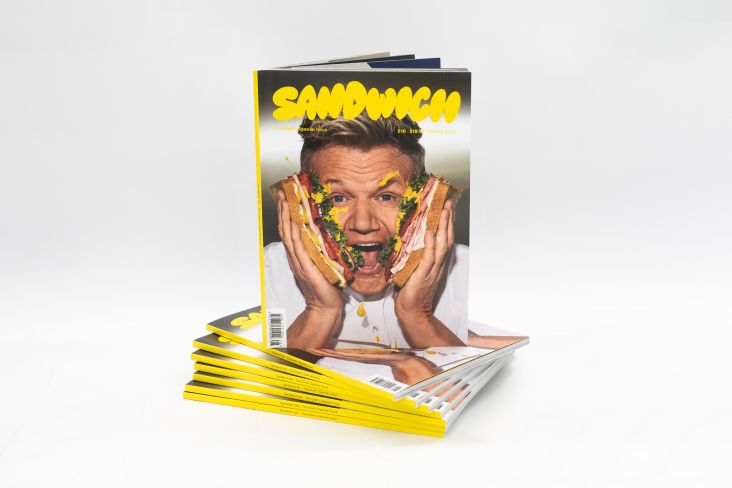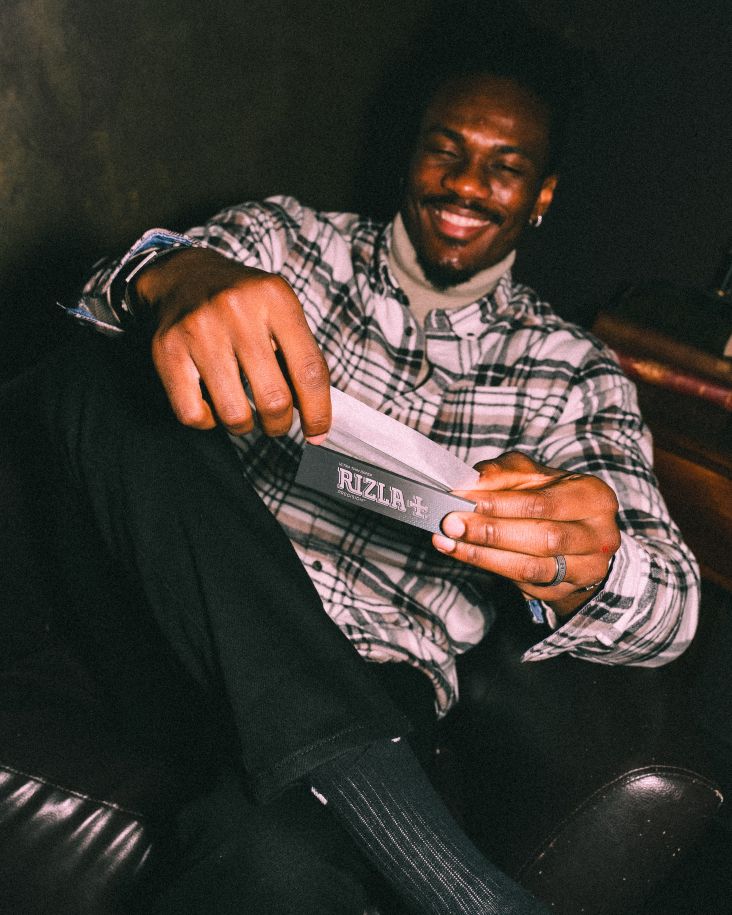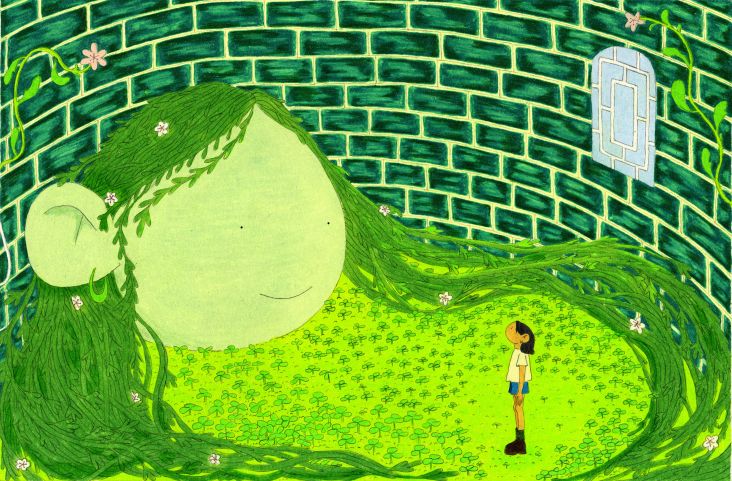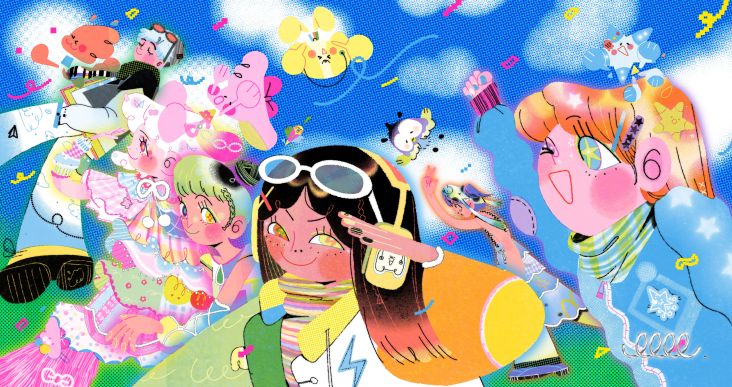Tips on starting an art journal, and why it can boost your creativity in 2024
Want to make 2024 special? Start an art journal to unleash your creativity and reflect on your journey.
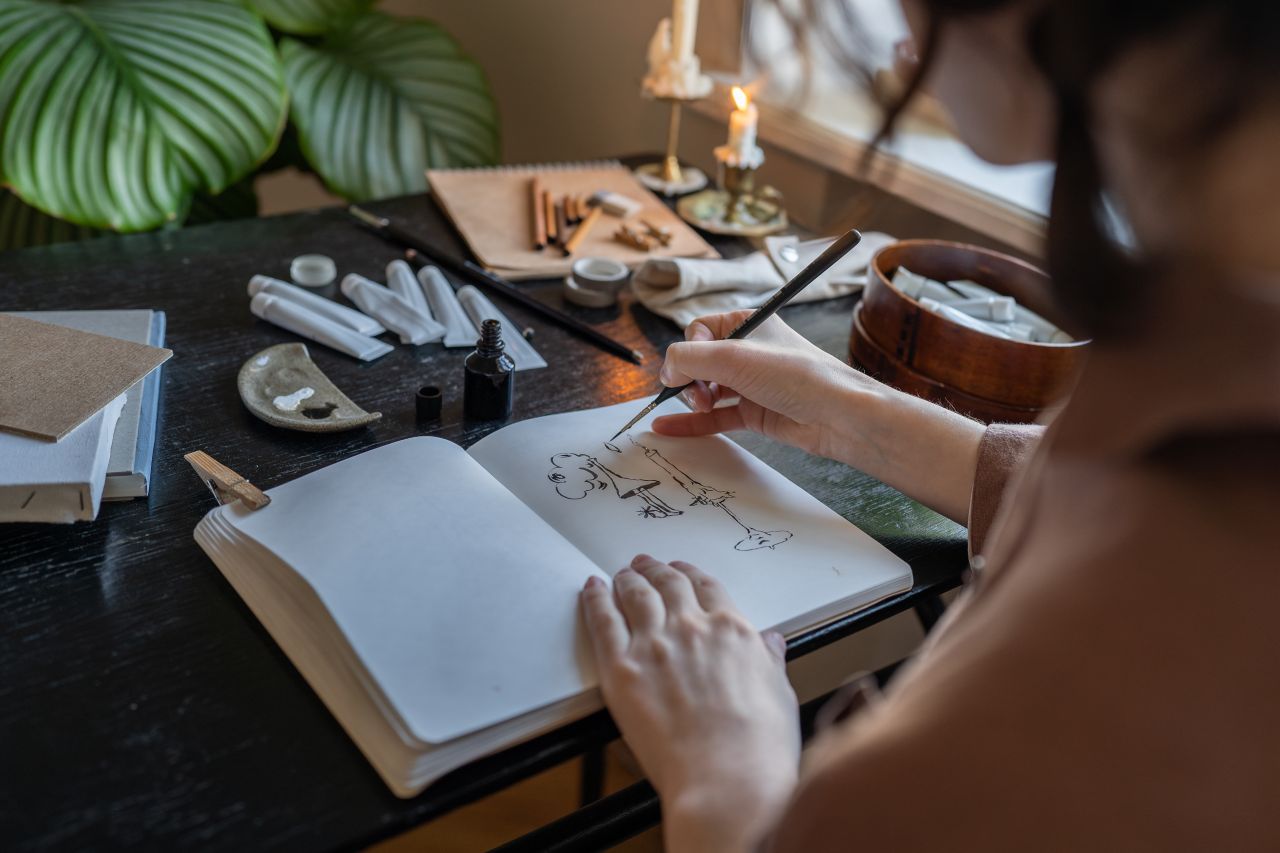
Image licensed via Adobe Stock
As the new year unfolds, it's a wonderful time to embark on a journey of self-expression and discovery through art journaling. Whether you're a seasoned artist or someone just dabbling in creativity, starting an art journal can be a fulfilling and therapeutic experience. In this article, we'll share pro tips on how to do so.
Before we get into that, though... what is an art journal exactly?
Well, first of all you're probably familiar with the concept of a personal journal: a book of blank pages in which you record your personal experiences, thoughts, and feelings on a regular basis. This has become more and more popular in recent years as a way to improve our mental health. The simple act of writing down our thoughts, frustrations and ideas can help provide clarity in our lives and serve as an outlet for emotional burdens. (For more on that, see our article on avoiding creative burnout).
An art journal is like a regular journal but instead of just words, it's filled with visual expression. Think of it as a personal playground where you can explore your creativity and emotions through art, mixed media, and perhaps writing. It's a space for you to experiment, relax and express yourself freely, without any pressure to create 'perfect' artwork.
In short, an art journal can be whatever you want it to be! In this article, we'll provide some tips and inspirations to help you begin your art journaling adventure.
1. Why journal?
There's no better person to explain why creatives should journal than award-winning author, founder and CEO Susie deVille, who wrote about the power of journaling in her book, Buoyant. She describes the journal as "our stalwart defense against paralysing inertia. Seemingly powerless and small next to our fear, a journal can transport us to the shores of safety and calm.
"By writing, sketching, painting or collaging in our journals, we can turn the valve and release the river of our creativity," she continues. "A journal is where we work things out. Where we air our frustrations, worry, anger, pain. A place where we celebrate, exalt, express our joy."
In other words, it is a protected zone where we can take risks, try on ideas, and search for connections and solutions. "A journal is our atlas to the world of possibility. When we have a lock on a state of possibility, we find opportunities everywhere.
2. Choose your journal wisely
The first thing to consider is what kind of book you're going to use as your journal. This is worth thinking about carefully, and don't be too penny-pinching. Ideally, this is going to be your canvas, your confidant and your enduring bedrock, so it's worth investing what you can in making it as attractive and comforting as possible.
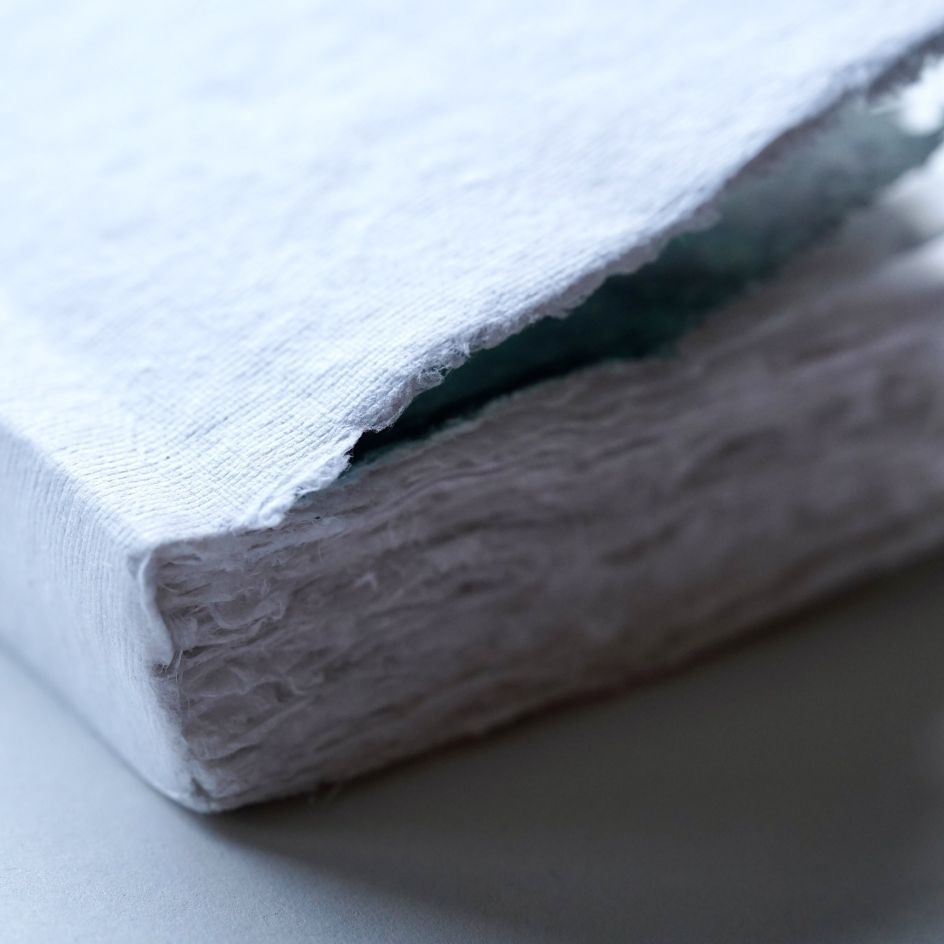
Charlotte Allen of Sleepy Bee Studio uses this cotton paper journal by Lamali
Ultimately, there are no limits here: you can use anything from a handmade sketchbook to a store-bought journal. But do consider the type of paper, size, and binding that are going to most appeal to you, as this will help you commit to a regular routine. And be practical too. For example, if you plan to use heavy media like paint or collage, you'll want thicker pages. Ultimately, the perfect journal is one that feels right to you.
That's exactly what Charlotte Allen, owner at Sleepy Bee Studio, has found for her journaling. "Last year I discovered a local indie shop that had a beautiful chunky cotton paper journal by Lamali," she explains. "I find it really relaxing, and it's fun to experiment with different media on a small scale."
3. Set a regular time to create
Consistency is key. If you just do journaling when you feel like it, you'll end up making excuses like "I'm too busy" or "I don't have time". So quite simply, you need to make the time.
Dedicate a specific time each day or week to work on your journal, schedule it in your calendar, and stick to it. This practice not only hones your skills but also turns journaling into a mindful ritual. And that's a large part of why journaling is important, not just for your creativity but for your mental health in general.
4. Gather your art supplies
The next thing to do is to gather a bunch of art supplies for being creative in your journal. That might sound like extra work but trust us: the more organised you can be from the start, the easier it will be to forge the journaling habit. That way, adding to your journal will never feel like a chore and will always be something you look forward to.
 uses an A5 Leuchtturm1917 journal and Caran D'Ache crayons for her art journal](https://www.creativeboom.com/upload/articles/73/7369b7ad8a67037b91795889ea1b0f6d02669917_944.jpeg)
Susie deVille uses an A5 Leuchtturm1917 journal and Caran D'Ache crayons for her art journal
There's no need to break the bank. Start with basic supplies like pencils, pens, watercolours, or acrylics. As you grow in your journey, you can expand your toolkit. And remember, sometimes limitations can spark the most creativity!
5. Embrace your imperfections
Your art journal is a safe space for experimentation and self-expression. That means it's the one place you shouldn't worry about making mistakes. However, for certain personality types, that doesn't always come naturally, so you may have to work at it, and make a conscious effort to embrace the idea that things may not turn out as you planned.
It's a bit like a business brainstorming session, where the rules are "There are no bad ideas". Here, similarly, there is no "bad art". In fact, you may find that your imperfections end up adding character and authenticity to your work!
6. Seek inspiration everywhere
Struggling to decide what to draw or paint? Then you need to shift your mindset, because wherever you are, there is inspiration all around you. Ideas for art can come from anywhere – from nature, from cityscapes, from conversations, even from dreams. Keep a small notebook or your phone handy to jot down ideas as they come.
For further ideas, here are some creative prompts to get you started:
Colour your mood: Use colours to express how you're feeling today.
Textures of Life: Incorporate different textures (fabric, leaves, etc.) into your page.
Wordplay: Choose a word or quote that inspires you and create a page around it.
Self-portrait: Create an abstract or realistic self-portrait.
Dream diary: Illustrate a recent dream or aspiration.
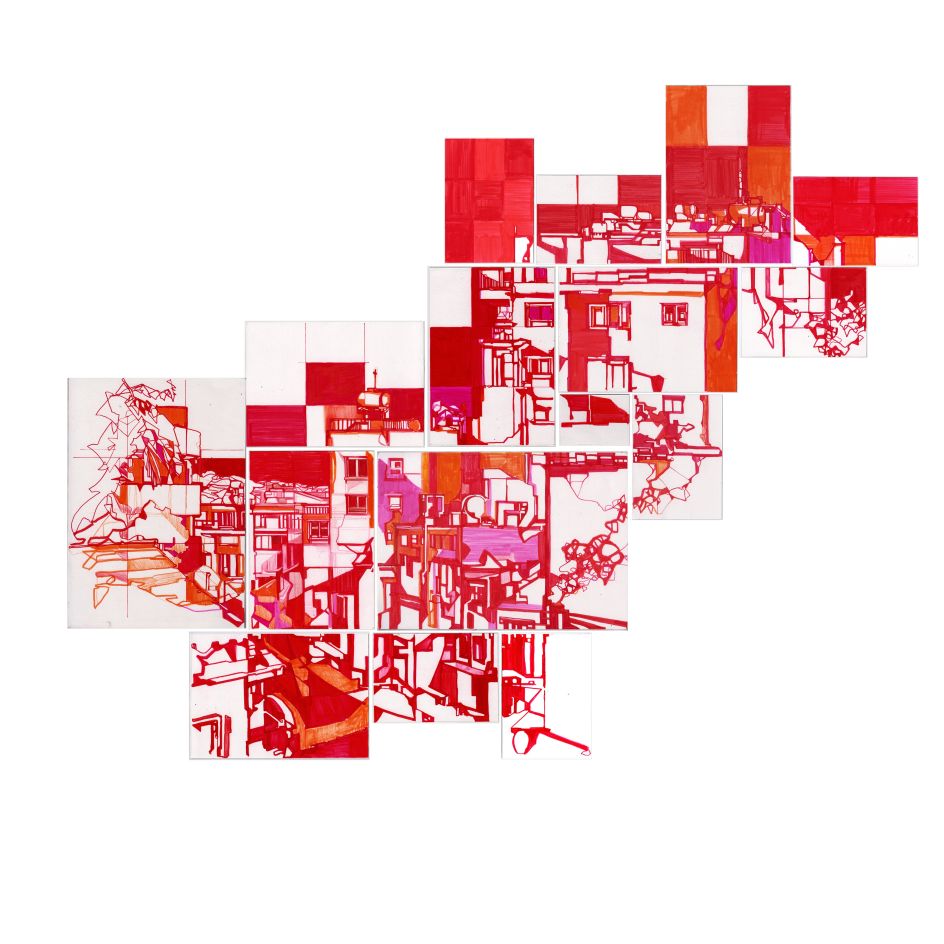
Abi Daker draws mini sections of places she sees while out running
Here's a great example of thinking outside of the box, and creating something personal to your life. "I'm drawing mini sections of places I see while out running and making them into collaged landscapes," says illustrator and artist Abi Daker. "It's something I'm doing four to five times a week."
7. Share and connect
We mentioned earlier that there's no reason to share your journal if you don't want to. But if you do like what you've created - or even if you don't, but want to discuss it - then it can be fun and fulfilling to share your art journal pages with someone you trust, or even an online or offline community.
Remember that because you're presenting this as journal work, people shouldn't judge it in the same way as finished work. And if some dumb people miss the context, well, that's their lookout. For a good example of a creative sharing their journal online, check out the Insta account of artist Kathrin Jebsen-Marwedel, who writes in both German and English.
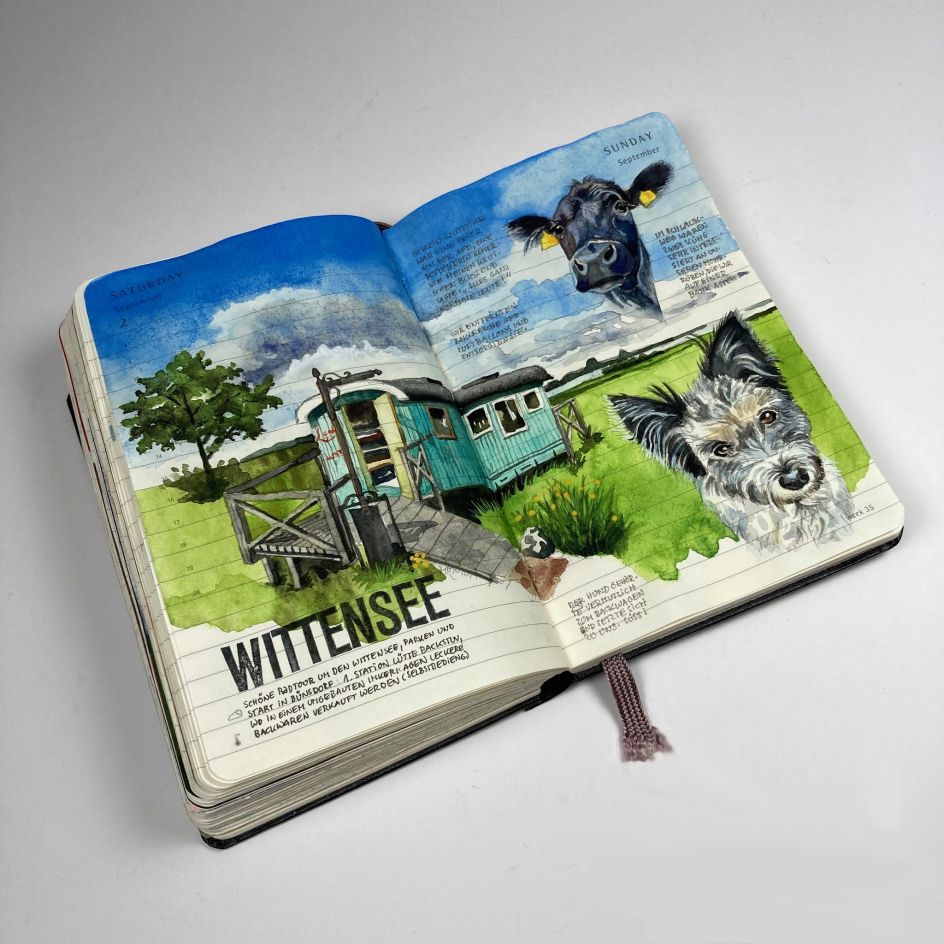
Kathrin Jebsen-Marwedel on Instagram @illustratedjournal
8. Reflect back over time
The best part of journaling is being able to regularly look back at your past entries, so make sure you do so. You'll be amazed to see your growth over time, not just artistically but personally as well.
And that's the key to art journaling, really: understanding that the process is just as important as the final product. Each page is a step in your creative path, a reflection of your thoughts, and a playground for your imagination. This process of exploration and discovery is meant to be fun, so always remember to enjoy it.
Whether it's a splash of paint, a thoughtful sketch, or a collage of memories, each entry in your journal is a celebration of your unique creativity. So let your imagination run wild, and start this new year with a colourful splash of self-expression. We wish you the best of luck!









](https://www.creativeboom.com/upload/articles/86/862919952c0ad18439004228895a431dc6e45ffc_732.jpg)




